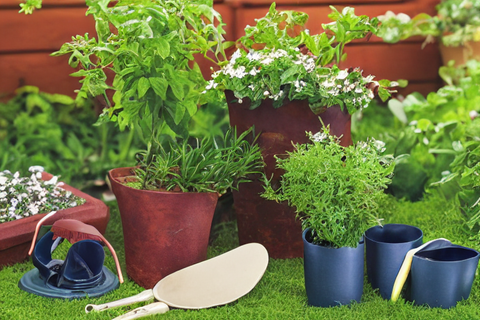Gardening is a form of horticulture, an activity that involves the growth of plants. Many plants are grown for their aesthetic value, but others are grown for their practical use.
Whether you’re growing a flower bed or a vegetable garden, you should know some basic gardening facts to help you get started. The first of these facts is that flowers aren’t just for show. Some of them have very practical uses as well.
Gardening Facts To Grow Healthier Plants
 Gardening dates back thousands of years. The first greenhouses were documented as early as 30 CE in Rome. The Roman Emperor Tiberius insisted on eating one cucumber every day, so the scientists there had to find a way to grow cucumbers.
Gardening dates back thousands of years. The first greenhouses were documented as early as 30 CE in Rome. The Roman Emperor Tiberius insisted on eating one cucumber every day, so the scientists there had to find a way to grow cucumbers.
The idea of gardening is as old as the human race itself. It has been used as a protest against urban neglect and the exploitation of nature.
One of the most important facts about gardening is that it’s a rewarding activity that can bring financial rewards for gardeners. It’s estimated that 27 million people worldwide are gardeners.
And even though it can be difficult to get started, once you have a basic understanding of how nature works, you’ll be able to take care of your garden with more confidence. In fact, it’s estimated that around 20,000 slugs live in a garden in the UK. That’s not counting garden centres, public gardens, and farms.
Bees pollinate plants. These insects transfer pollen from plant to plant, which contains male DNA for plant reproduction. They’re helpful for gardening, but can also cause trouble. Some insects, known as pests, eat plants’ leaves, flowers, and fruit, causing severe damage to your garden.
Farmers use insecticides to prevent pests from damaging your garden. Bees buzz around flowers and plants during the day, and they’re attracted to brightly-colored flowers. Bees are responsible for pollinating 100000 species of plants. When the weather gets too humid, they hide in their beehives.
Growing plants too close together can reduce air circulation and light. It also causes plants to compete for water and nutrients.
This can result in premature death of the plants. Plants that are too close together can also be susceptible to overcrowding, which will limit their growth. You can check the general spacing requirements of the plants you buy.
Gardening has become more popular due to a number of factors, including increased leisure in industrialized nations, an increased public desire to be self-sufficient, and increased awareness of environmental threats.
Many people also prefer the taste of homegrown fruits and vegetables over those that come from the grocery store. In addition to these reasons, a growing population of millennials is starting to realize the benefits of gardening.
According to the covid survey, a growing number of people are interested in outdoor living and gardening. It has been estimated that 18 million Americans began gardening in 2018 alone, and four percent of gardeners have increased their gardening efforts.
Despite the health risks involved, people who are affected by this disease may be more likely to spend more time outdoors.
According to the National Gardening Association, over 35% of US households are growing fruit and vegetables in their backyards. Another 31% are growing in a community garden. Additionally, gardening lowers the risk of dementia by 36%. Even a simple garden can burn 330 calories an hour. It can even improve your quality of life.
Another important gardening fact is that different plants require different conditions. It’s important to read labels and seed packets carefully to determine which types of plants will thrive best in your local area.
For example, some plants require warmer temperatures and protection from wind and rain. They also require good soil that allows their roots to grow without draining. In addition, plants need water.
While most plants require adequate water, some need more. Also, some plants need support, while others need protection from insects.
One interesting gardening fact is that 164 million Americans currently have a garden or plan to start one. Among those who garden, 70% prefer to grow plants for eating. Most of these gardeners are women, and over half of them are over forty.
The average American will eat about half of a radish during his lifetime. The largest zucchini ever grown was over a million pounds! Unlike other crops, lettuce contains more than ninety percent water, making it an excellent choice for healthy diets.
The appeal of gardening is multi-faceted, from being a creative outlet to a therapeutic activity. Many cultures see gardens as an extension of nature. As such, there’s a rich literature documenting the practical aspects of gardening.
Some of the earliest written manuals date back to the classical period of Greece and Rome. Even today, major poets have included imagery of plants in their writings.


 Gifts for dad that are practical and useful are the best gifts you can buy. Gardening is an enjoyable hobby that can help reduce stress and enhance quality of life.
Gifts for dad that are practical and useful are the best gifts you can buy. Gardening is an enjoyable hobby that can help reduce stress and enhance quality of life.